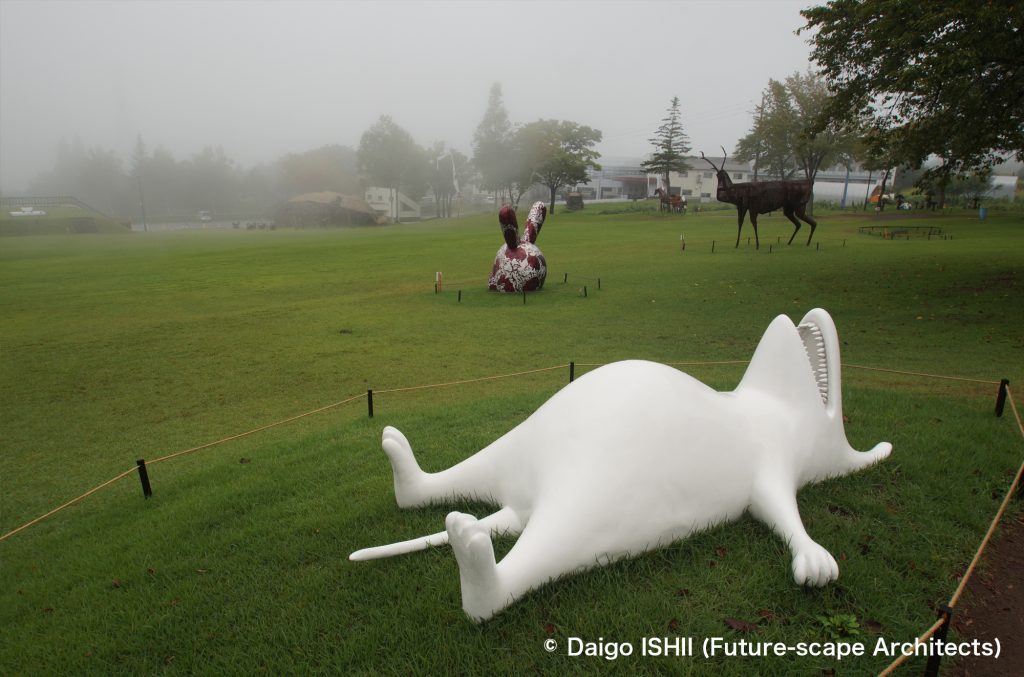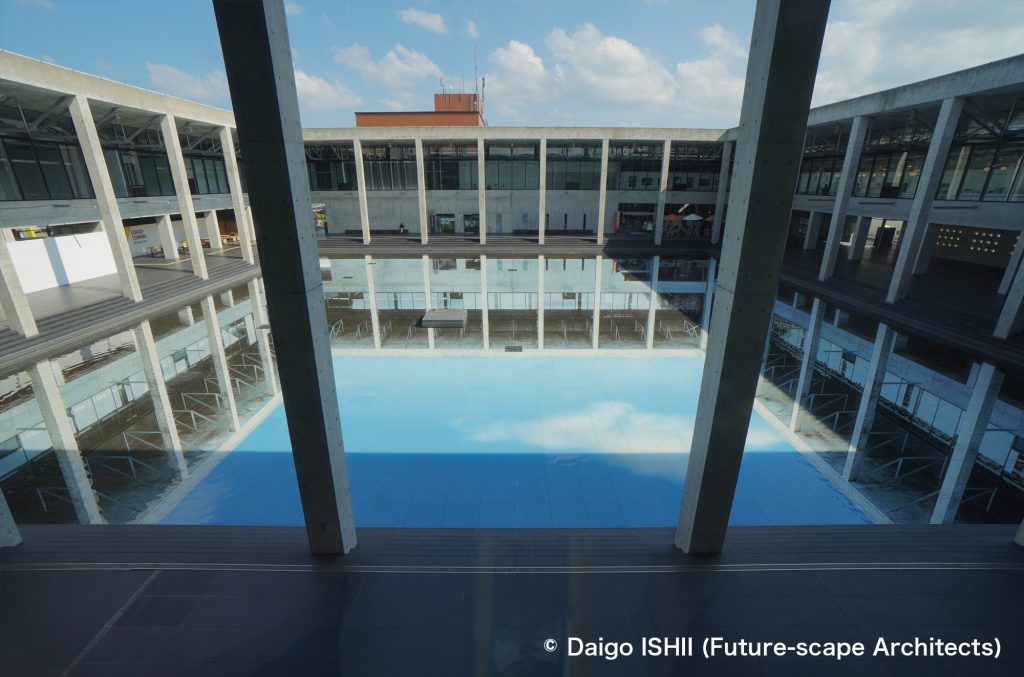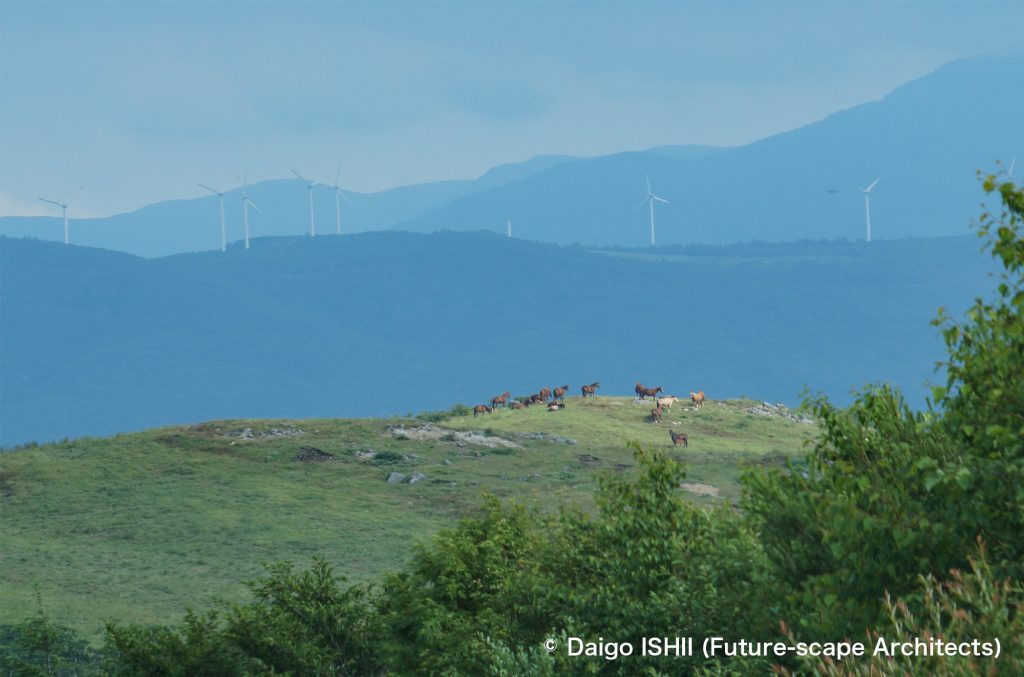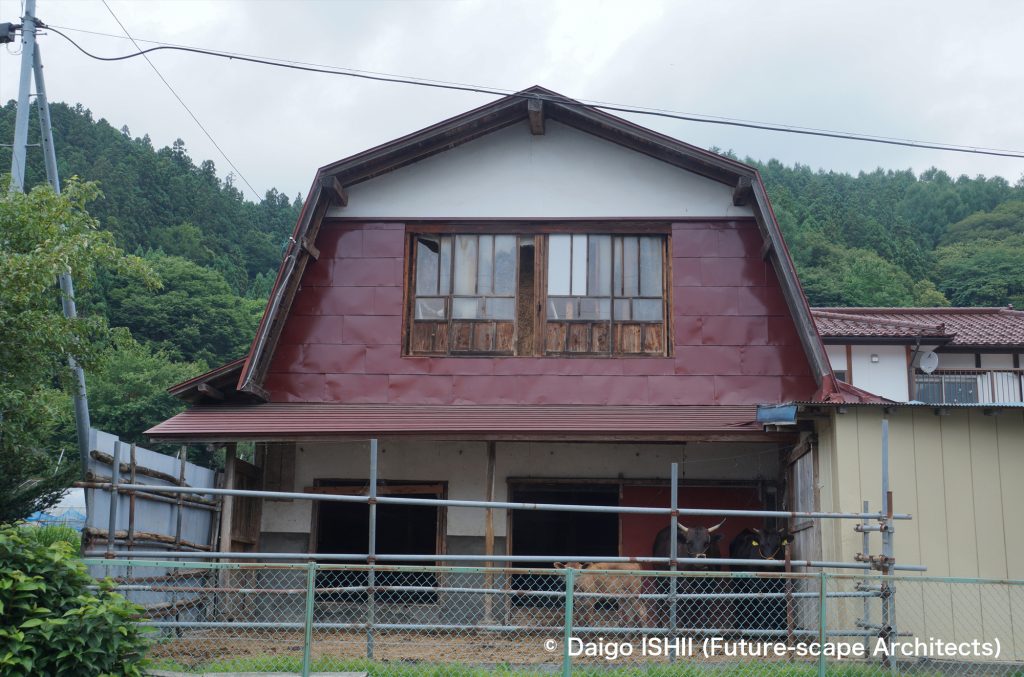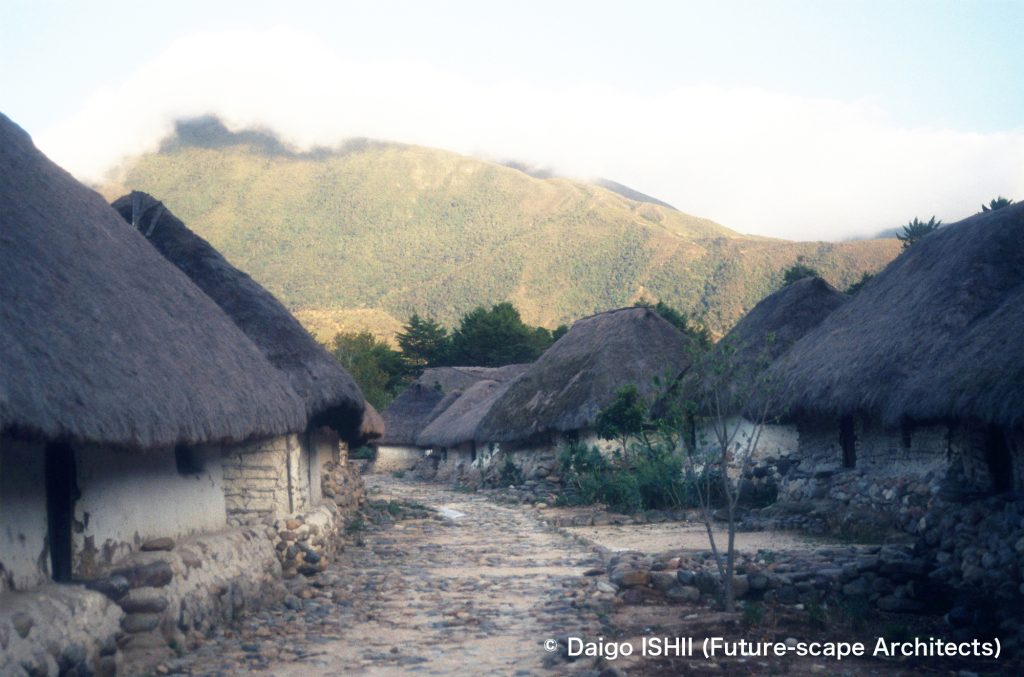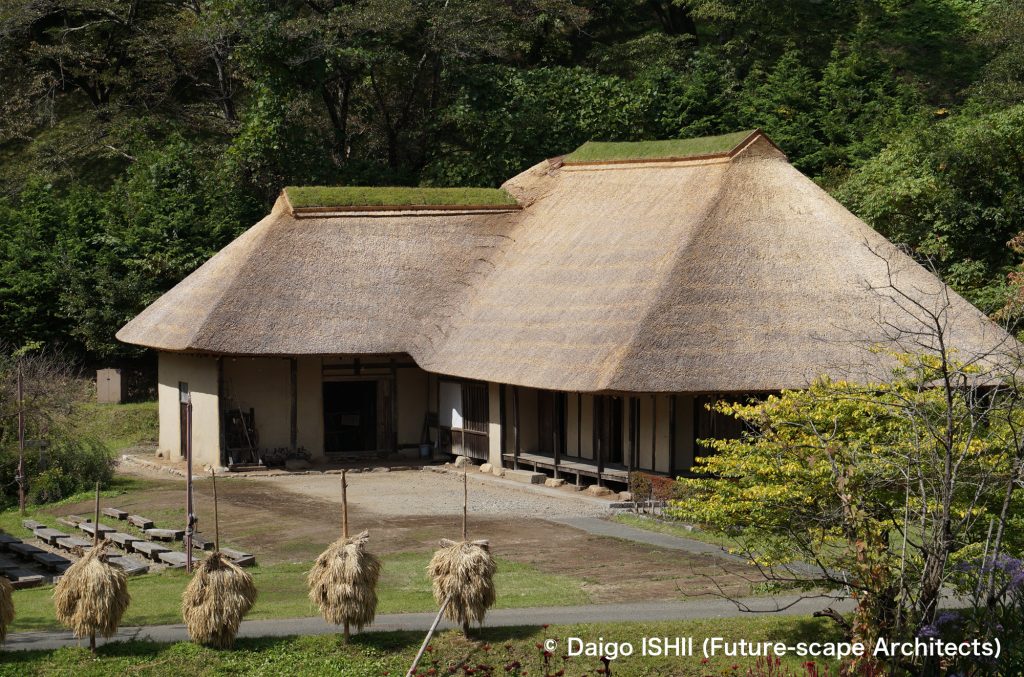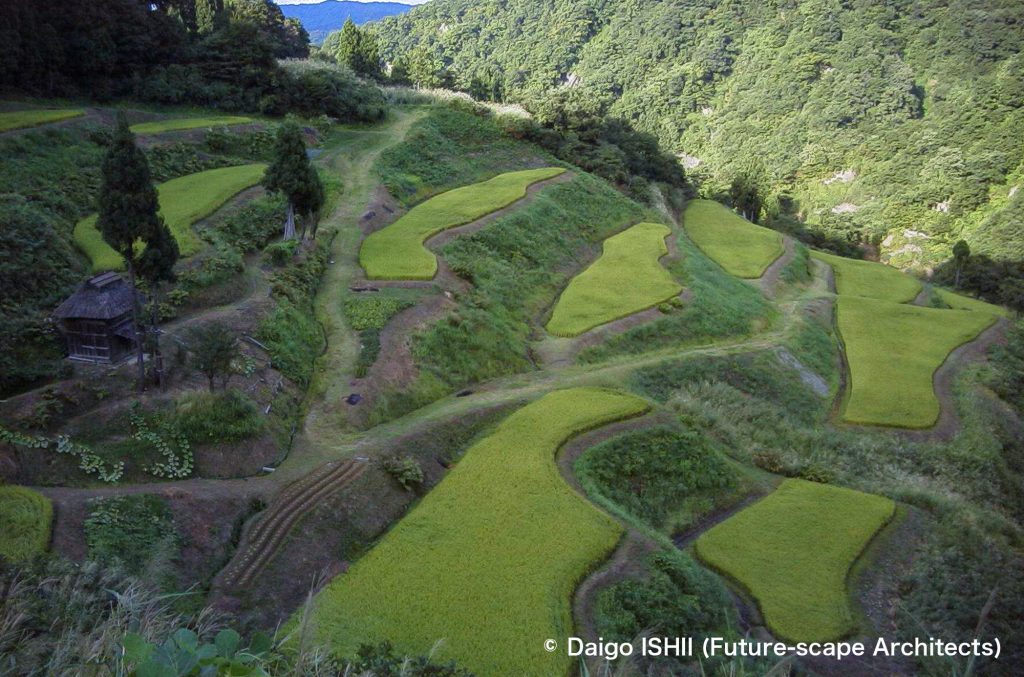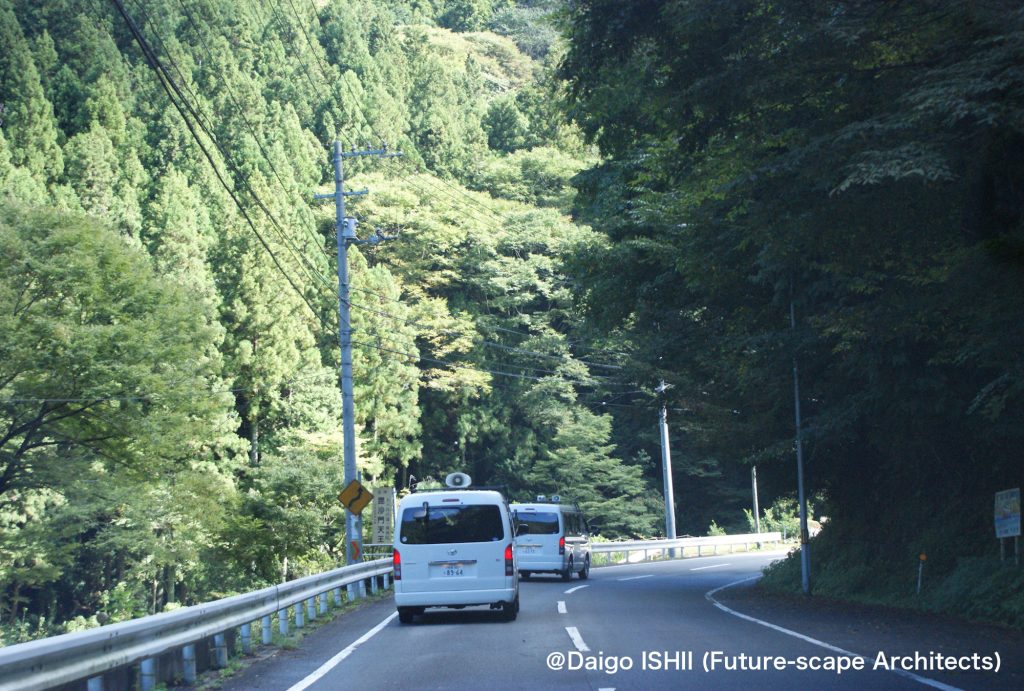1891年(明治24年)創業の小岩井牧場。岩手山麓の雄大な風景の中に、牧草地や山林が広がり、明治から昭和初めの事務所や牛舎、サイロが点在します。
Koiwai Farm was founded in 1891. In the magnificent scenery of the foot of Mt. Iwate, meadows and forests spread out, and offices, cowsheds and silos from 1890s to 1910s were scattered.

A cow moves in front of the Koiwai Farm Museum in Kamimaru district. Beyond it are Silo No. 1 and Silo No. 2, which are designated as national important cultural properties.
https://goo.gl/maps/oUxbLuWeP6veMT9S8
小岩井牧場の21施設は重要文化財に指定され、ほとんどが今も現役。建設当時、牛舎に最先端のトラス架構で大空間を確保し、4階建の飼料倉庫にエレベーターを導入したことなど、先進的なつくりだったことも、100年使い続けた理由かもしれません。
本部事務所は、鮮やかに塗られたコロニアルスタイルの下見板張りに、レースのような可愛い軒飾り。新時代の事業を象徴するようです。しかし、それ以外の作業場の大半は、連続窓、大空間のような新しい形式を、町家でよく使われた押縁下見板張りで包んだため、地域に馴染んだ感じがあります。
起伏のある美しい牧草地や山林は、不毛の原野を土壌改良してつくり上げたもの。この地で長い間続いた、山林と牧草地の混在する夏山冬里のランドスケープと通じていました。毎年成長した分だけ伐採する法正林制度を導入し、人工林を天然林に戻す、先進的エコロジーも実践しています。
小岩井農場とは、先進的な事業を、ローカルな風土の延長に実現しようとした場に見えました。
牛舎前には広々とした芝生のパドック。夏も冬も、毎朝、牛が運動しています。風土に配慮し、建物を大事に使い続ける姿勢は、動物を大切に扱うことにつながっています。ただし、南部地方の「曲り家」が「牧舎」に代わり、前近代的な家族経営から、大規模で近代的な、企業による牧畜へ移ると、動物への優しさも、家族の一員から、よりプラグマティックになっていました。
The 21 facilities in Koiwai Farm were designated as national important cultural properties, and most were still active. At the time of its construction, the barn had a state-of-the-art truss structure to realize a wide space, and the four-story feed warehouse was equipped with an elevator. The advanced facilities may be the reason why those have been used for 100 years.
The headquarters office had brightly painted colonial-style clapboards and cute eaves like lace. It seems to have symbolized the business of a new era. However, most of the workshops with new forms such as continuous windows and large spaces were wrapped in the finish often used in traditional house, so those looked familiar to the locality.
Beautiful undulating meadows and forests were created by improving the soil of barren fields. It associated with the landscape of Natsuyama Fuyusato (pasturing cattle in summer and feeding them indoors during winter), which had succeeded for a long time. They have also practiced advanced ecology like a normal-forest system in which the farm cut only the amount that a forest has grown in a year, and reverting artificial forests to natural forests.
Koiwai Farm must have been a place where they tried to realize advanced business as an extension of the local climate.
In a spacious grass paddock in front of the barn. the cattle exercised every morning, in summer and winter. The attitude that they considered the climate and continued to use the building carefully led to treating cattle with care. However, as the traditional house 'Magariya' in this region changed into a cowshed, and pre-modern family farms shifted to large-scale modern corporate ranching, friendliness for cattle as a family member also transformed into more pragmatic relationship.
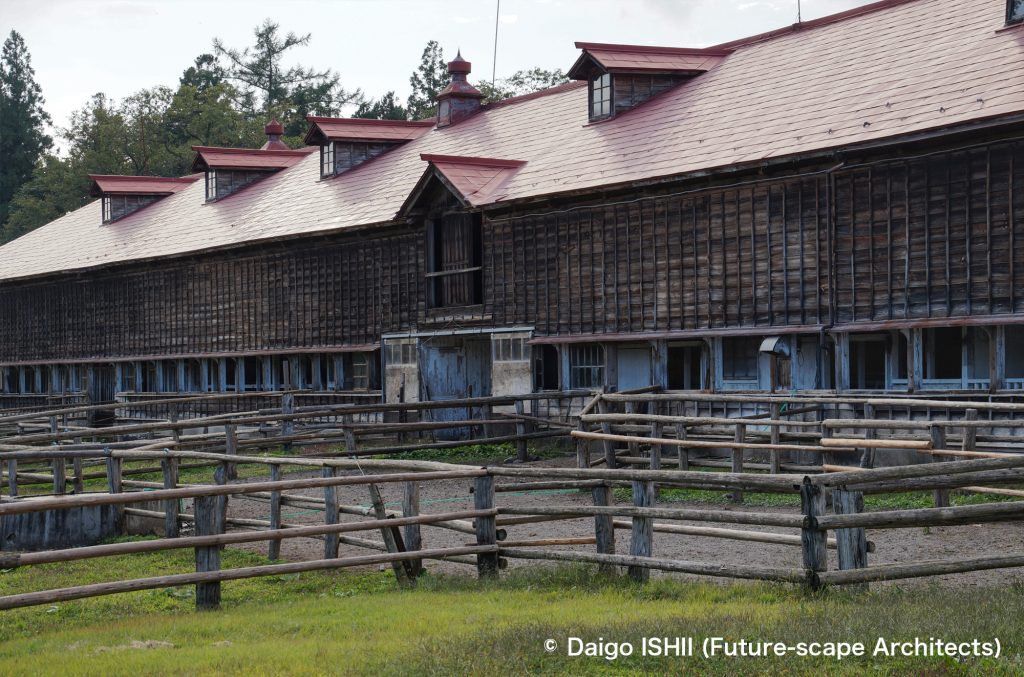
See No. 3 cowshed for calves, which was designated as an important cultural property and was built in 1935 in Kamimaru district. A paddock spreads out in front of it.
https://goo.gl/maps/Qok5o7juRgoHid3X6

See No. 3 cowshed for calves, which was designated as an important cultural property and was built in 1935.
https://goo.gl/maps/Qok5o7juRgoHid3X6
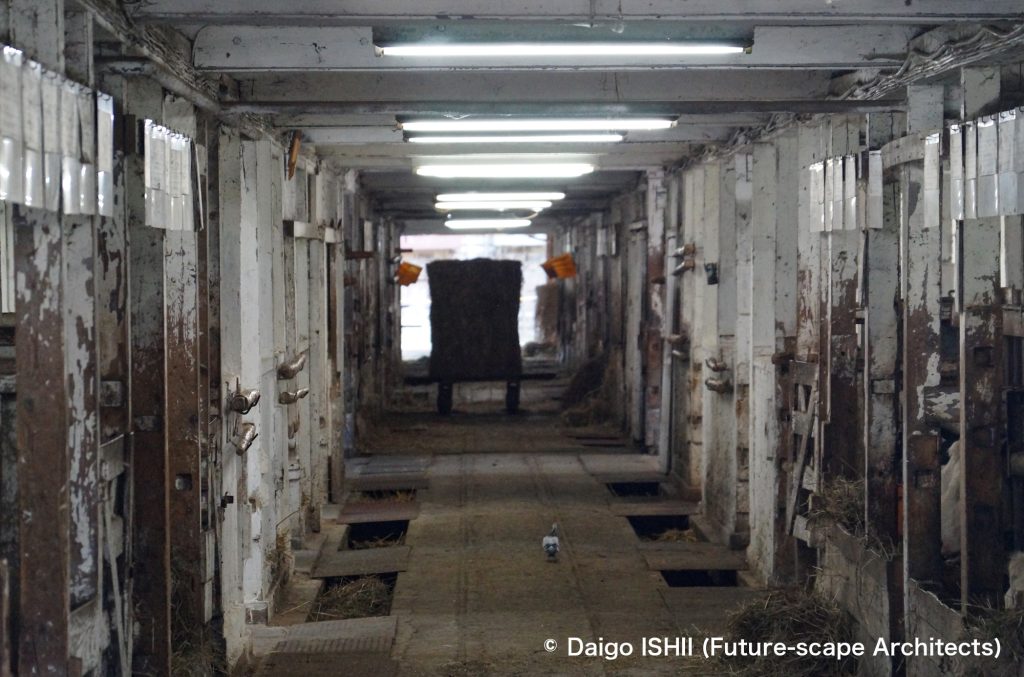
See No. 3 cowshed for calves, which was designated as an important cultural property and was built in 1935 in Kamimaru district. See the central aisle for work at the back of the entrance.
https://goo.gl/maps/Qok5o7juRgoHid3X6
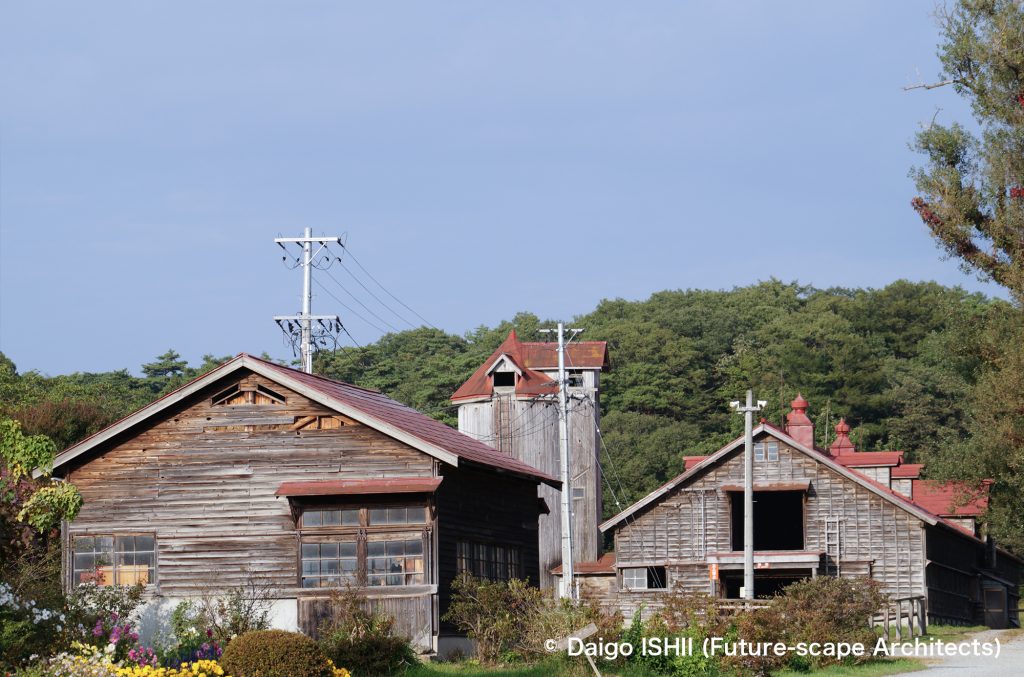
See No. 4 cowshed for milking cows, which was designated as a national important cultural property and was built in 1935 in Kamimaru district on the right side.
https://goo.gl/maps/YMbjme9HnzhsQbSN6
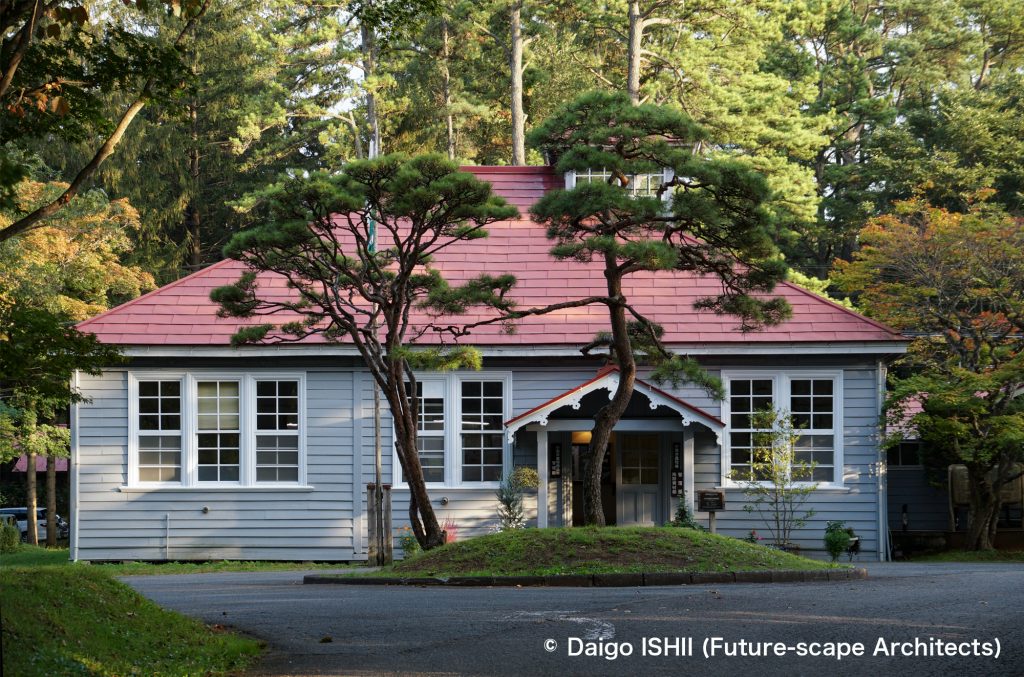
See the headquarter office, which was designated as a national important cultural property and was built in 1903. It was finished with painted colonial-style clapboards
https://goo.gl/maps/Ajmz37yxwsE4RvLF7
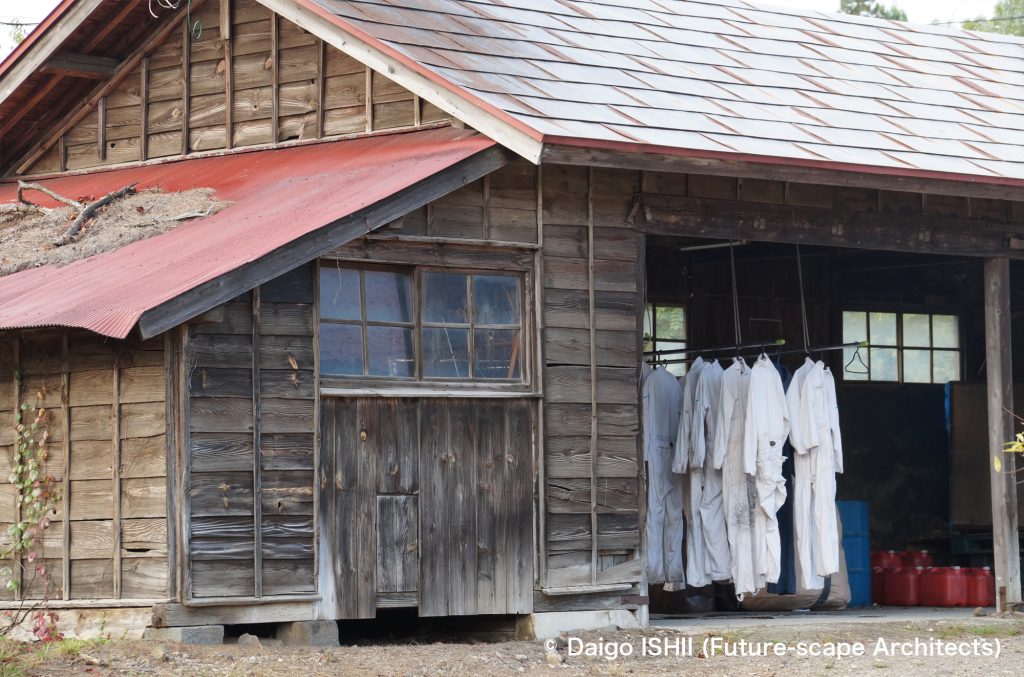
See a work space in the Kamimaru district.

See a row of cherry blossom trees in the center of the Kamimaru district.
https://goo.gl/maps/XbchszazckxSohBp7
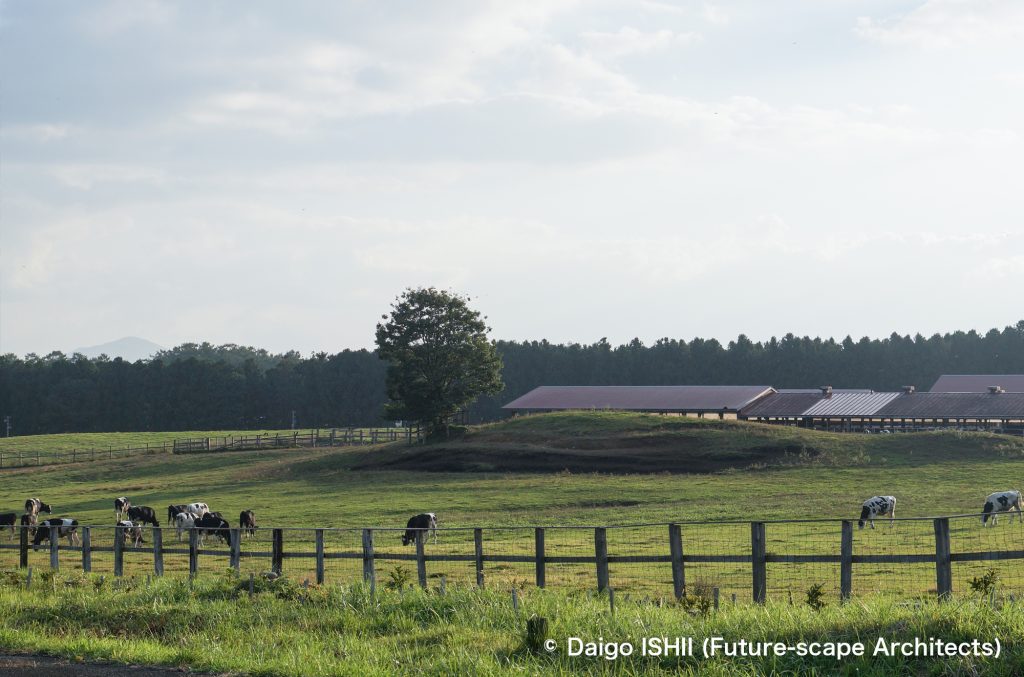
See a pasture located between Nakamaru district and Shimomaru district.
https://goo.gl/maps/XeLNbidy6EuhmQYr5
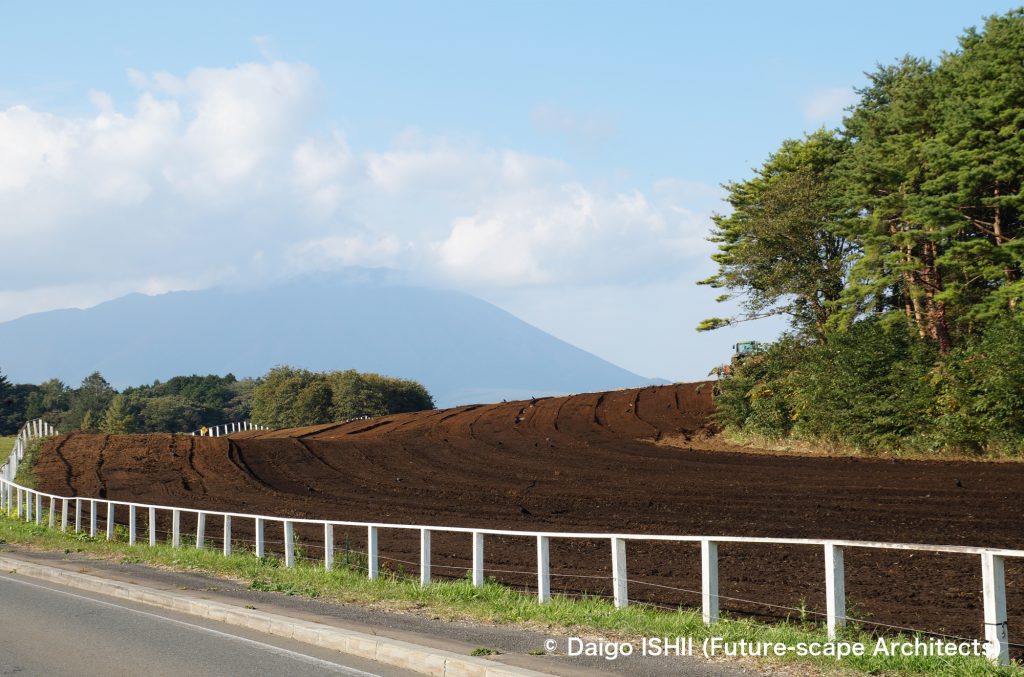
See a farmland located between Nakamaru district and Shimomaru district.
https://goo.gl/maps/pgjo6PdsuQmMXq5h8
ご感想はこちらへ / Click here for your impressions
参考文献 / reference
”広葉樹の天然林復活へ”(日本経済新聞,2002.12.29)
小岩井農場パンフレット
小岩井農場のホームページ
文化庁 文化遺産オンライン
Wikipedia
写真の無断使用、転用はご遠慮下さい。/ Please do not use or upload our photos without permission.
